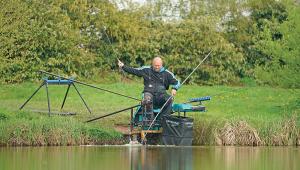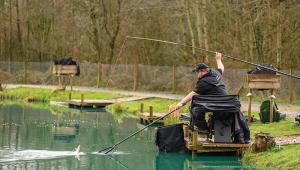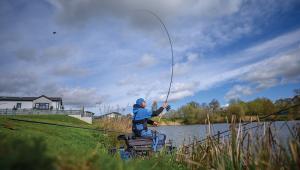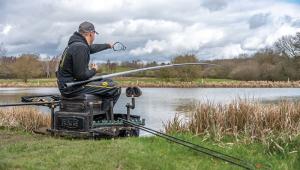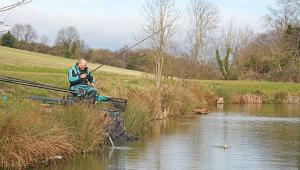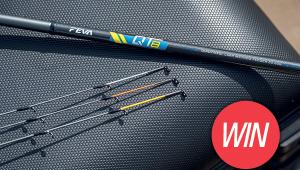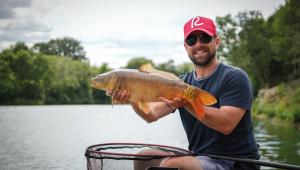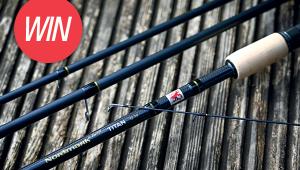Maggot Margins - Jim Hall
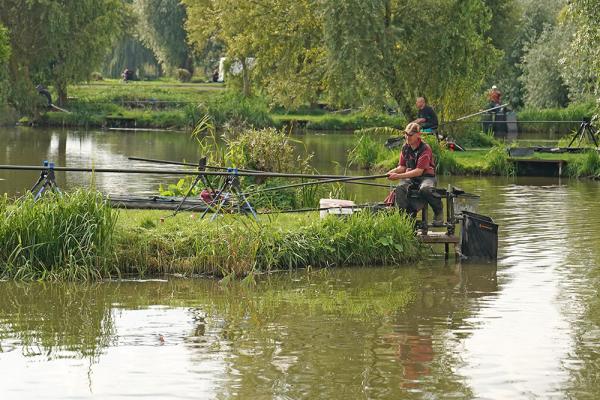
Reduced to catching rakes of ‘eyes and fins’ or ‘wasps’, while those around you, using more ‘conventional’ baits are emptying their swims with better quality fish.
You could not be further from the truth in my eyes. But that said, you do need to do things in a particular way but get it right and you can win a lot more matches than you ever will being on a level playing field, using pellets, corn and groundbait like the rest of your fellow competitors.
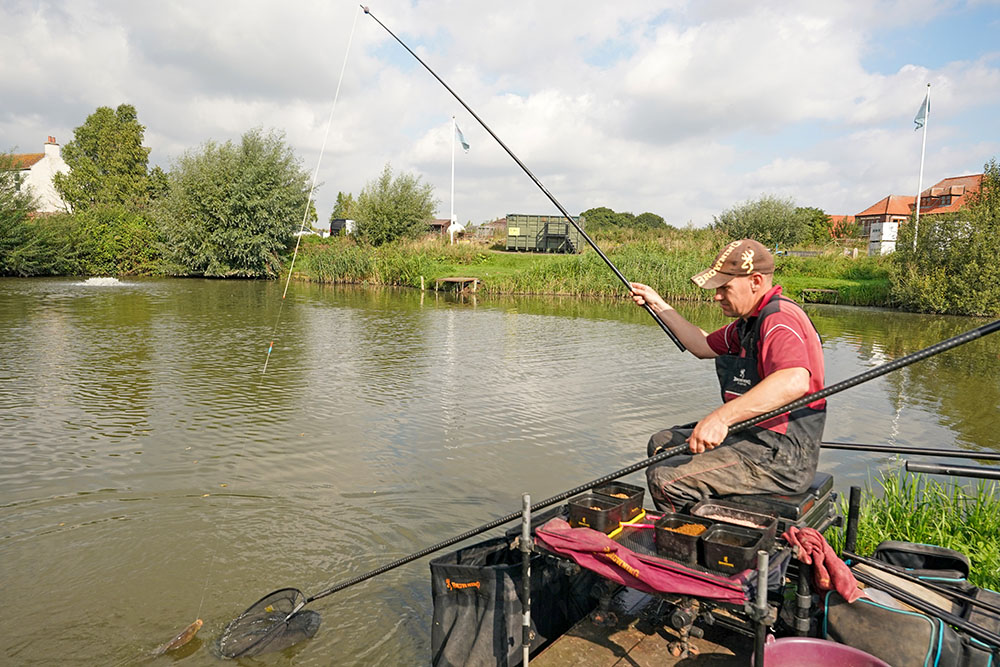
There is a real trend, especially as we approach the colder months, to move to a regime of loose feeding smaller baits with a large bonus hook bait over the top is standard practice. This usually takes the form of 2mm micro pellet with a 4mm expander on the hook.
The problem here is that it can be a very one-sided approach, where you are only really targeting carp and skimmers. Which, with the current water temperatures being what they are, can be a hard task, but, like I said, if you switch to feeding and fishing just maggots, when the colour starts to drop out and you open up a whole new world of angling possibilities.
Especially on a water like Willows, here at the fantastic Lindholme Lakes, near Doncaster. Yes, generally hard pellets do reign supreme at Lindholme, but by fishing maggots very positively I guarantee you will out fish the more traditional approaches of others.
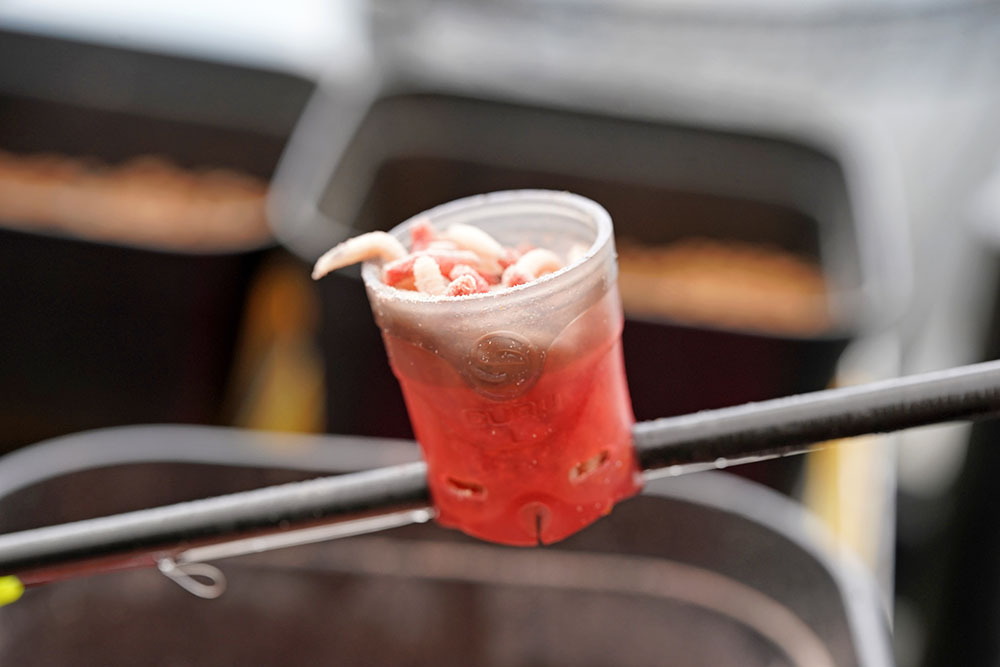
Maggot Man
Maggots are one of those baits that I have used quite extensively for several years now, probably around six or seven. In fact, I’m not sure just why I’m revealing one of my best match-winning tactics, but there you go! Once the water begins to cool off, a lot of anglers switch from hard pellet to soft.
This can be fine but it’s not an approach that I rate wholly. I reckon that on certain days, fishing positively with maggots will out fish all other tactics hands down, especially when you use them in the margins.
I have no idea why, but they seem to draw the bigger F1s into the swim, which as we all know in the autumn/winter months, are great weight builders. You will catch the odd carp too, but mostly this approach is perfect for getting those big F1s in your swim.
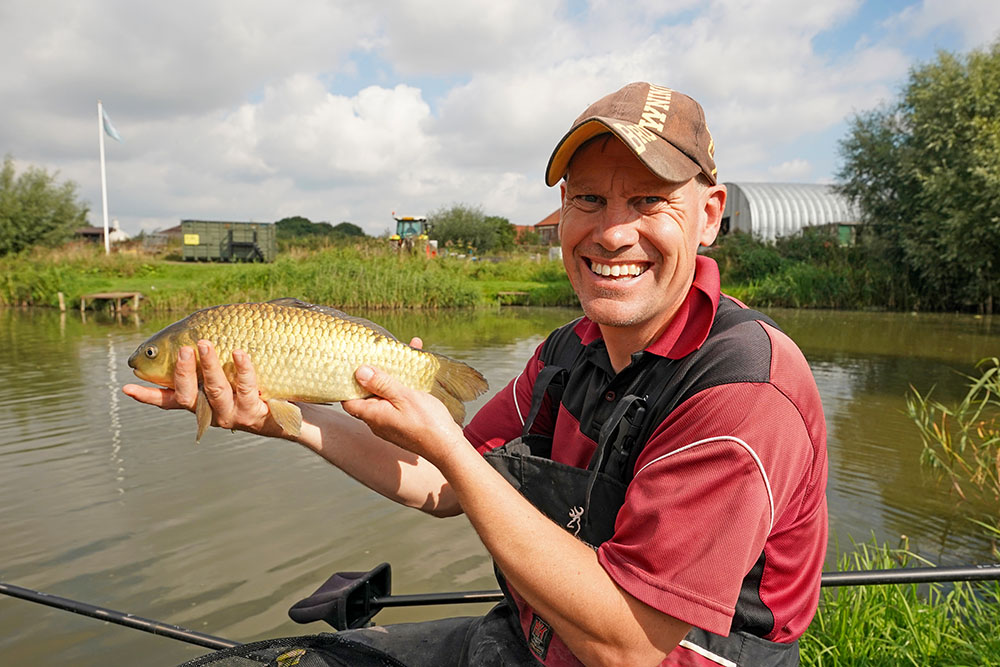
This is particularly pertinent here on Willows as the margins are quite deep, so if you were to use the more time-honoured approach of groundbait and a large hook bait of sweetcorn and pellet, because of the deep water you will end up having loads of foul hooking problems.
For some reason, even though maggots sink quit slowly compared to pellets, you never get foul hooking problems. Because I tend to fish very positively, the fish seem to spend most of their time grubbing around on the lake bed, turning over rocks and stones to find every last one. So, when it comes to fishing on deep margin lakes, this approach is a real killer.
You will of course find that at the start you will catch the odd smaller fish, but the more you feed the more the big F1s will bully these out. But, that said, in winter every fish counts and quite often a few ounces can sperate the top positions in a match so why not catch a few at the start?
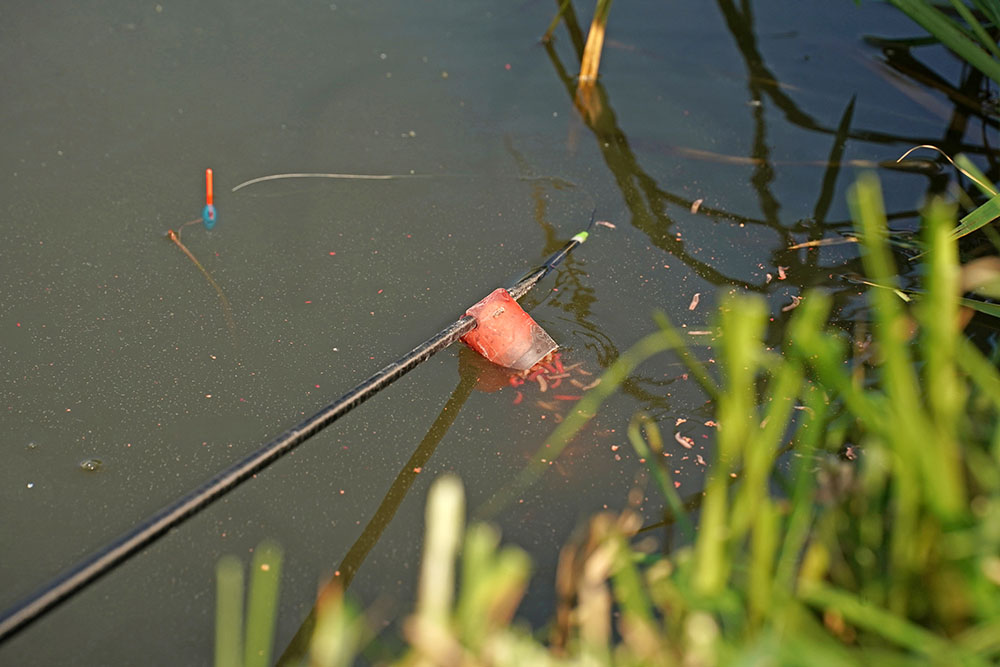
Maggot Choice
I have always used a mixture of 50:50 reds and whites but I will always use two reds on the hook. The mixture of reds and whites is a confidence thing for me the same as using reds on the hook. I would think any colour would work really.
I will always try to use the freshest live maggots I can get too as they wriggle more. This is usually the kiss of death on commercial waters as this movement is what attracts the smaller fish. This is why lots of anglers have started using dead maggots, I find that again these are no good for deep margin use as they are too light and waft up too much in the water, which causes foul hooking nightmares.
Dead maggots are better when fished with groundbait, which is next to useless in margins that are deeper than two-and-a-half feet or so. Also, unlike dead’s or casters even, live grubs wriggle off so they hold the fish in the swim for much longer and the longer they are there, the more chance you have of catching them.
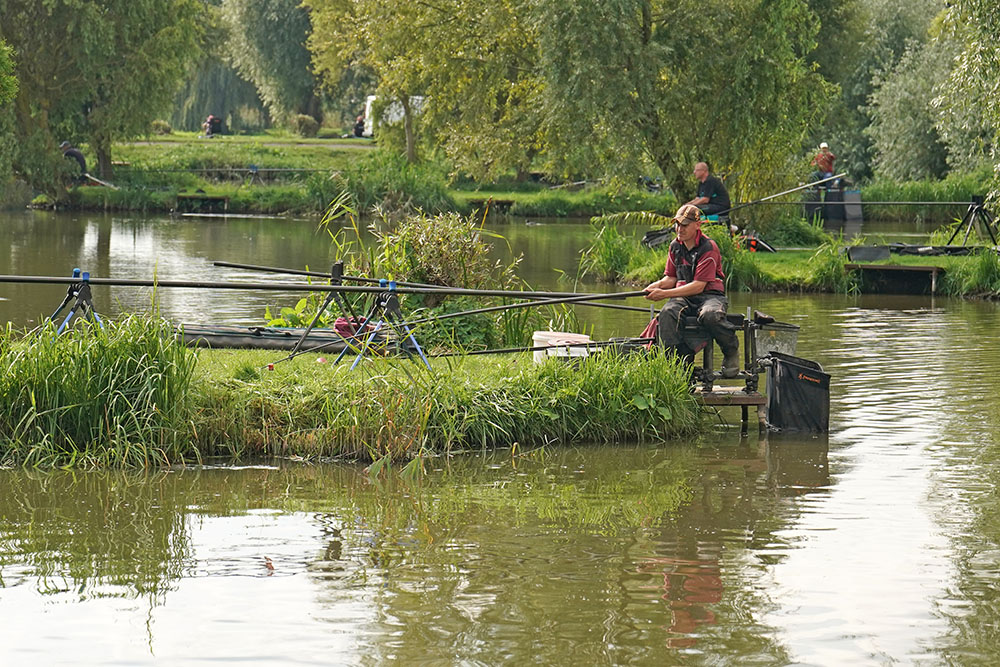
Like I said earlier, maggots are quite slow sinking compared to pellets, so you’d think the fish will come up in the water to intercept them, but they don’t, or not the way I feed them anyway.
As I dump feed them, either in a pole cup or pot, the maggots go down in a large clump which sees the fish following them down to the lakebed. I do cup them in under the water though, so I don’t make any noise as this is what draws the smaller fish in. If I were to use a catapult or throw handfuls in I would have a complete nightmare as the swim would be chaos. I wouldn’t get the rig in, even with a heavy bulk!
I tend to add a third of a cup at once, this will draw in the F1s and get rid of the smaller fish naturally. As 300 to 400 grubs all fall at once there’s too many to pick off on the drop, hence the reason they feed hard on the deck all the time. This is why you will need around six-pints or more, but they don’t cost much more than the equivalent in pellets.
Location Matters
My maggot approach is something that works well in the margins, but that said, I have used it successfully on Benny’s before in 10 feet of water, when the fish were being a bit finicky. Ideally, I’m looking for waters that are F1 dominated and margins with a depth of around three-and-a-half feet or more.
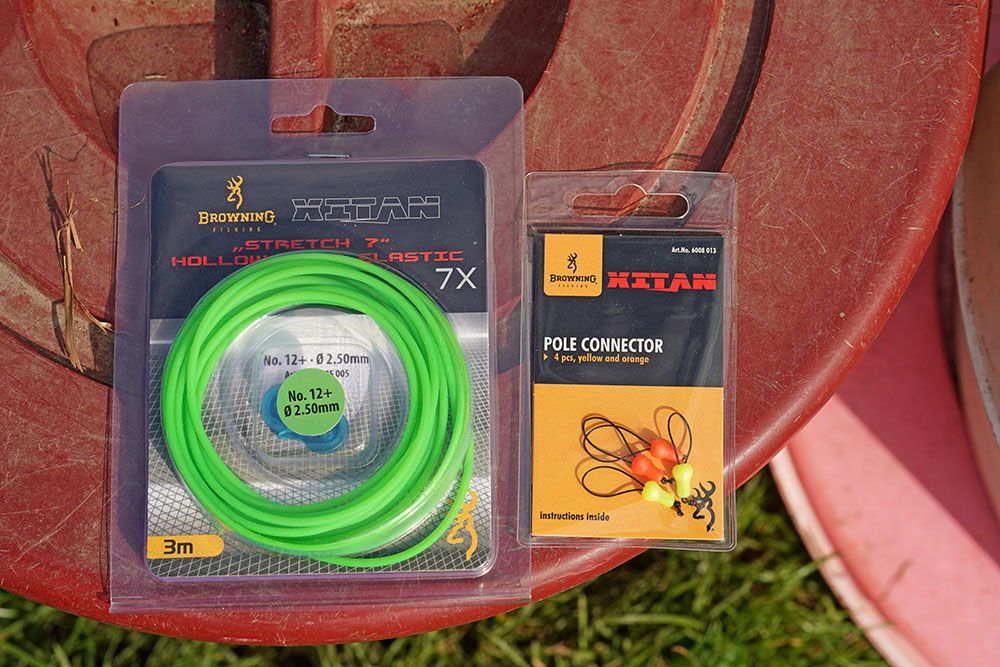
I want a marginal depth of at least two-and-a-half feet, but the deeper the better I find and these are the margins that everyone else avoids! Or if they don’t, they tend to fish it the same way, so this doesn’t work as well and this is when my approach really cleans up! Apart from this all the usual margin rules apply. A bit of cover and a flat area to present the rig and you are away and running.
Margin Rigs
As I’m fishing in the margins for bigger fish ideally, I don’t want to go too light. My elastic is a Browning Stretch 7 12+ hollow. This is set quite soft so it’s okay for the smaller fish, but will quickly power up for the larger ones. I also have a puller kit fitted in case a big carp turns up too. But, in the winter months, most fish don’t fight that hard really.
The mainline is 0.18mm Hybrid Power Mono. I use this as I am fishing towards snaggy reeds so I want that robustness and strength. To combat this, I have a four-inch hooklink of 0.14mm to bring a bit of finesse and presentation to the rig. Plus, as the margins are that bit deeper, the fish tend to swim out rather than bolting. The hook is a Beast Barbless, size 16 with two maggots.
My float is very different from the standard margin style though. I like to use a 0.3g Slim TN. These have a 2mm bristle, which has an air pocket at the tip, so the light comes through making them very easy to see in low light conditions. It has a wire stem to so it’s very stable in the water. As the shotting is only a small bulk of No10s just above the hooklink, a carbon stem wouldn’t work as well.
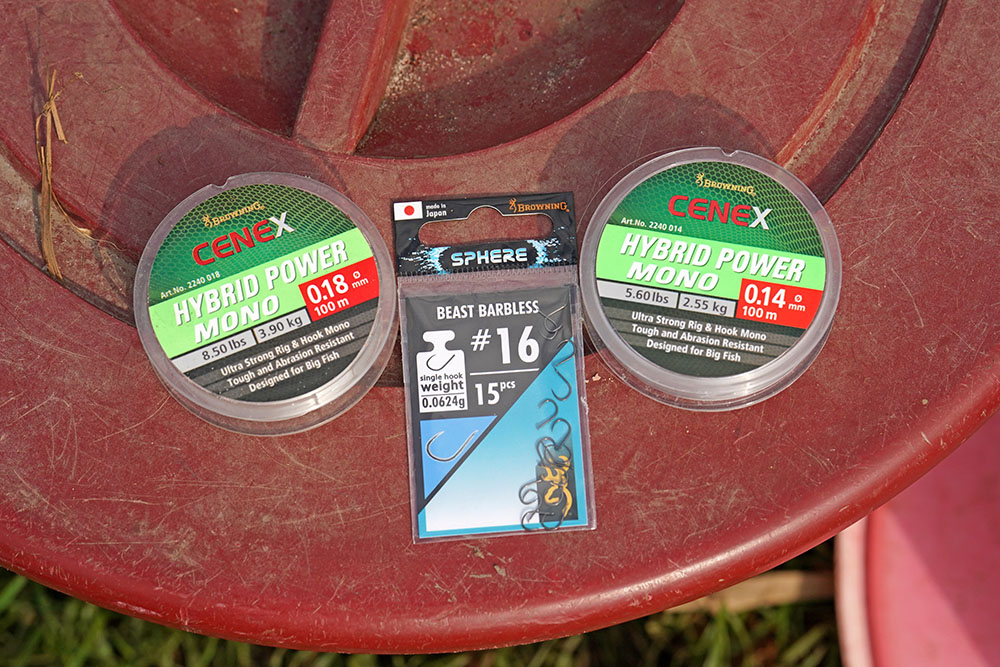
Although 0.3g is very light for the margins, the depth is the same as out front, so I use a similar set-up and it works very well. Again, if you were to use a ‘standard’ margin rig, the tactic will not be anywhere near as effective. The combination of the loosefeed and the rig balance each other perfectly, like two gears meshing. The rig is plumbed up so it is fishing around one-inch overdepth, I want to make sure the hookbait is hard on the deck.
Feeding and Fishing
For the tactic to work and work well, you need to be very positive from the off. If you try to start or even end up going more negative, you will get bitted out every time. Once the really cold weather hits, you might get away with just pole pots, but at this time of year, you need to get plenty of loose feed in to draw and hold the bigger fish.
I start by feeding a third of a cup of maggots, refeeding the same quantity every 30 minutes or so. During this time, I will fish a pellet or corn line out front while this line settles. Normally all margin swims take a while to get fish in, although on some waters you can fish them from the off. Generally, I look to feed for around two hours or so but see how it goes on the day.
After my last pot, I wait for 10-minutes before going over the line, feeding a full pot of maggots so I can then gauge the response. If there are lots of smaller fish there, I can then come off the line and refeed with the pole cup again. It won’t take long though before those big F1s make an appearance and bully these smaller fish out.
Like I said, it is all pot and cup work as to not make any noise. It is all about being stealthy – I even press the maggots down into the cup, so they tend to go down in more of a clump when I feed them.
Apart from these few little bits, it’s a very easy tactic that works brilliantly in the cooler months. Get it right and it’s a real killer that has helped me secure more than my fair share of match wins over the years. All I have to ask myself now is, why have I revealed it to Match Fishing Magazine!
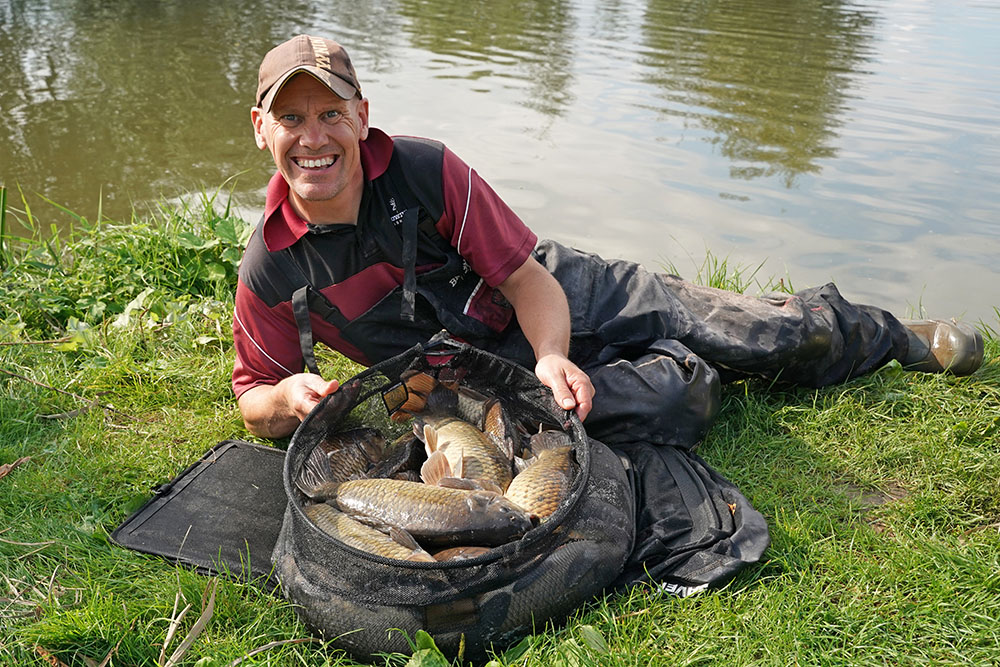
- Log in or register to post comments

